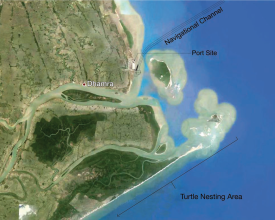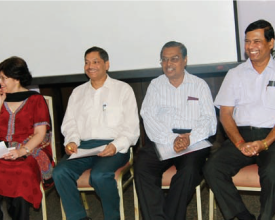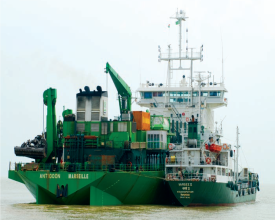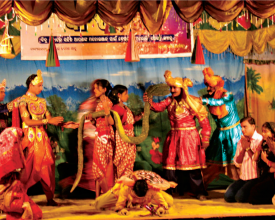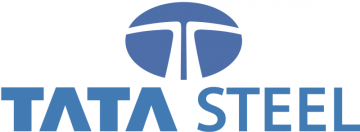
Ensuring the conservation of Olive Ridley turtles: a case study of how development and conservation can co-exist
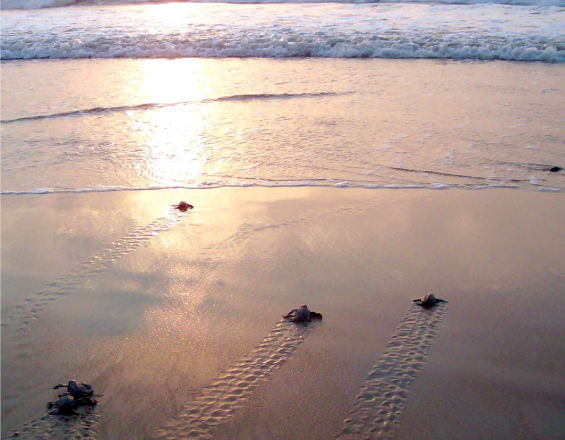
The story of Dhamra Port is the story of a major corporation and a global environmental organization working together to ensure that the construction of a large deep-sea industrial port in India would not harm a significant population of endangered sea turtles. From a development perspective, the site was perfect. However, from a conservation perspective there were questions about its location close to one of the world’s largest nesting site of the Olive Ridley turtle, protected under Indian law. The collaboration between DPCL-Dhamra Port Company Limited (then a joint venture between Tata Steel and L&T) and IUCN shows that development and conservation can co-exist, and that there are ways to develop in a responsible manner that meets both the needs of people and the needs of nature. Lessons learned from this partnership can be applied to other projects that will have similar positive outcomes for people and for nature.
Context
Challenges addressed
The major challenge to this project was ensuring the success and continuity of safeguards to protect turtles from being severely impacted by port construction and ensuing long-term port activities. However, there were other challenges related to the desired behavior change. These included:
- Resistance of concerned actors to the project; and
- Reputational risk for key stakeholders.
In terms of ensuring the protection of Olive Ridley populations in the long-term, enhancing community awareness about the importance of turtles was also important, including changing community fishing practices that contributed to turtle mortality.
Location
Process
Summary of the process
Through the three project building blocks, a holistic solution toward the challenge of balancing development with conservation was reached. While each block addressed a different aspect of the project, the combination of all these helped to consolidate mutual trust and collaboration among the stakeholders and actors, enabling engagement, dialogue and understanding for both the short term outcome and for long-term sustainability.
Building Blocks
Strong partnerships and open communication
The private sector is commonly described as being blind to environmental issues. The reality, however, is that the private sector is heavily invested in biodiversity. The project was an opportunity for companies to deepen their understanding of environmental issues and to develop the corporate habit of thinking beyond the bottom line. Less obviously, it is an opportunity for environmental specialists to deepen their understanding of business and development dynamics and to learn to include bottom line analysis in their own evaluations.
Enabling factors
Robust communication practices went hand in hand with the partnership. Because of the sensitivity around the issue among environmental organizations and other sectors, the approach toward the project was to make information transparent and publicly available. The partners described very clearly what they was doing and what they were not doing – and why. Information was made available through fact sheets and the project website, and by engaging in public discussions and meetings.
Lesson learned
A number of other efforts were made to ensure information was flowing freely between the key stakeholders. For example, in early 2009, IUCN held a Consultative Technical Workshop on Dhamra Port in Bhubaneswar, Odisha, followed by a trip to the port site. The interactive forum brought together a diverse mix of government representatives, the private sector, leading local and international scientists, technical experts, academics and local community representatives. Work with the press ensured that messages were disseminated at a national level. These efforts encouraged participation and helped to dispel confusion.
Science and technical expertise
Dredging, recognized as a serious threat to the marine turtles, was identified by IUCN as a priority. IUCN, with experts from the Species Survival Commission’s Marine Turtle Specialist Group designed and developed a dredging protocol to be followed during port operations. These included installing turtle deflectors on all dredger drag-heads to help ensure turtles were not pulled into the dredger. Trained observers were assigned to all dredgers to monitor this process. These observers would check screens on inflow and overflow pipes on a 24/7 basis. These measures (deflectors, screens, and human observers) were put in place to ensure that the dredging was “turtle friendly”. Such measures were the first to have been put in place in the history of dredging activities in India.
Lighting was the second major threat identified because excess glare is known to distract turtle hatchlings as they instinctively move towards brightly lit areas and away from the sea. For this, the IUCN Commission experts provided specific guidelines for the port’s lighting plan, which was adopted by the port authorities. IUCN further supported Tata Steel in identifying the right design for these lights. Today, Dhamra Port is the first and only port in India to have installed “turtle friendly” lighting.
Enabling factors
IUCN supported DPCL in developing an Environment Management Plan (EMP). This plan was scientifically robust and practically implementable, going beyond the existing legal requirements. Most importantly EMP was designed in such a way that it becomes the integral part of the Standard Operating Procedures (SOPs) of DPCL. This makes it different from other EMPs.
Lesson learned
Large-scale infrastructure can be designed to successfully incorporate biodiversity considerations.
Community outreach and governance
IUCN entered into the Dhamra port project because of concern about the port harming Olive Ridley turtles. As IUCN dug into the problems, however, it learned that the mortality rate of the turtles had already increased dramatically. A report prepared by the Wildlife Institute of India indicated that turtle mortality had increased from a few thousand a year in the early 1980s to more than 10,000 by the mid 1990s. Mechanized trawl fishing and gill net fishing were seen to be responsible for the mortalities.
Local community awareness regarding the value of the turtles was low. To address this, the IUCN team engaged in community sensitizing activities, including creative educational programs, as well as traditional outreach. DPCL also established a community training centre so that local villagers could develop new skills.
IUCN also identified that the use of Turtle Excluder Devices (TEDs) could be helpful in reducing turtle mortality due to trawl fishing, one of the biggest problems in the areas. The devices weren’t new to fishers in the Dhamra area – Indian NGOs and scientists had tested them with the fishers in the past – but they weren’t being used. The IUCN DPCL team consulted extensively with local fishing cooperative officers and communities to better understand the issues.
Enabling factors
A training workshop was organized and a number of practical trials of the TEDs for fishers in the area were facilitated. Changing the practices of local fishing communities remains a major priority, but will require long-term education programming combined with policy solutions.
Lesson learned
The last obstacle to be tackled in this public arena was governance. In the beginning, local authorities seemed more concerned about fishers’ rights than turtle safety. However, as understanding spread, government agencies became partner advocates for the holistic, long-term solutions. There were alternative livelihood trainings to provide income generating options to the community besides fishing.
Impacts
As a result of the partnership and with assistance from IUCN, DPCL drafted an Environmental Management Plan (EMP). The EMP addresses regulations, policy, planning, implementation, operations and management as well as quality assurance and monitoring. It details the procedures needed for change management, and the development of a corporate culture that prioritizes safety, environmental protection and the promotion of positive community relations.
To fund ongoing research and intervention, a trust, proposed by IUCN, is being established to support long-term conservation in the area. DCPL and IUCN have now initiated the process of establishing the “Dhamra Conservation Trust”. The Trust will focus on turtle conservation along the coastline of Odisha; improving the quality of life through alternative livelihoods; promoting opportunities for women; and empowering villagers.
On the broader scale, the project has led to a deeper understanding among private, public and civil society actors that much can be done to address both development and environment at the same time, in a sustainable manner, using good science. The outcomes of the project are changing perceptions not just on the business side on environmental sustainability, but also on the side of environmental organizations about the role they can play in enabling similar breakthroughs in sustainable business practices.
Beneficiaries
- DPCL
- Tata Steel
- IUCN (International Union for Conservation of Nature)
- Fishers and local communities
- Olive Ridley Turtle population
Sustainable Development Goals
Story
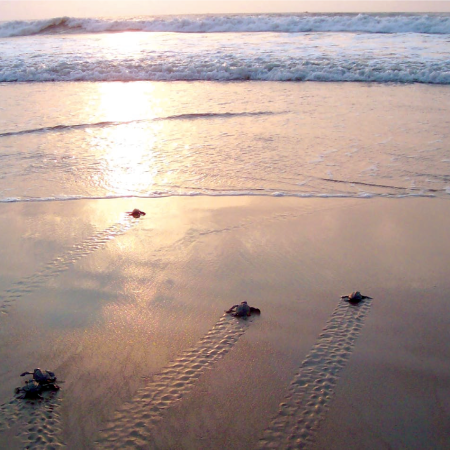
The story of the Dhamra Port is a story of misunderstandings, technical difficulties and conflict. But it is also a story of determined individuals, enlightened companies, innovative approaches and mutual benefit. In the end, it resulted in a happy ending for Olive Ridley turtles and the people of Odisha.
Many environmental organizations in India opposed the development of the port. Tata Steel sought to assess whether the infrastructure could be built without harming the turtles, so they asked IUCN for advice.
IUCN brought in its global experts on sea turtles who worked with the company to implement mitigation measures. The environmental community and NGO members within IUCN were critical of the organization’s involvement. They wondered whether the port could be built without harming this population of a vulnerable species.
International evidence showed that it was possible for ports and turtles to coexist, if standard operating procedures were followed. By mobilizing its international network of experts, IUCN could bring objective science and commitment to conservation, to the table.
In spite of the IUCN Council approved Business and Biodiversity Strategy mandating work with “large footprint” industries, some IUCN Members felt that IUCN shouldn’t engage with certain fossil fuel-heavy industries. Others argued that, when accounting for the potential to influence a large-scale development project and mitigate impact on a species, compromises were worth it.
Based on global best practices, the international science community supported this position, and concluded that environmental damage could be mitigated. IUCN remained a neutral partner in the project, using science for an optimal outcome. For IUCN, the project was an important learning opportunity around engaging with business to provide the best results for nature and local communities.
The two organizations worked together through many challenges to show that development and conservation can co-exist, and that there are ways to develop in a responsible manner that meets the needs of people and nature, simultaneously. The established trust between Tata Group and IUCN led to other forms of engagement, proving that biodiversity protection can be a core principle of a large-footprint industry.

